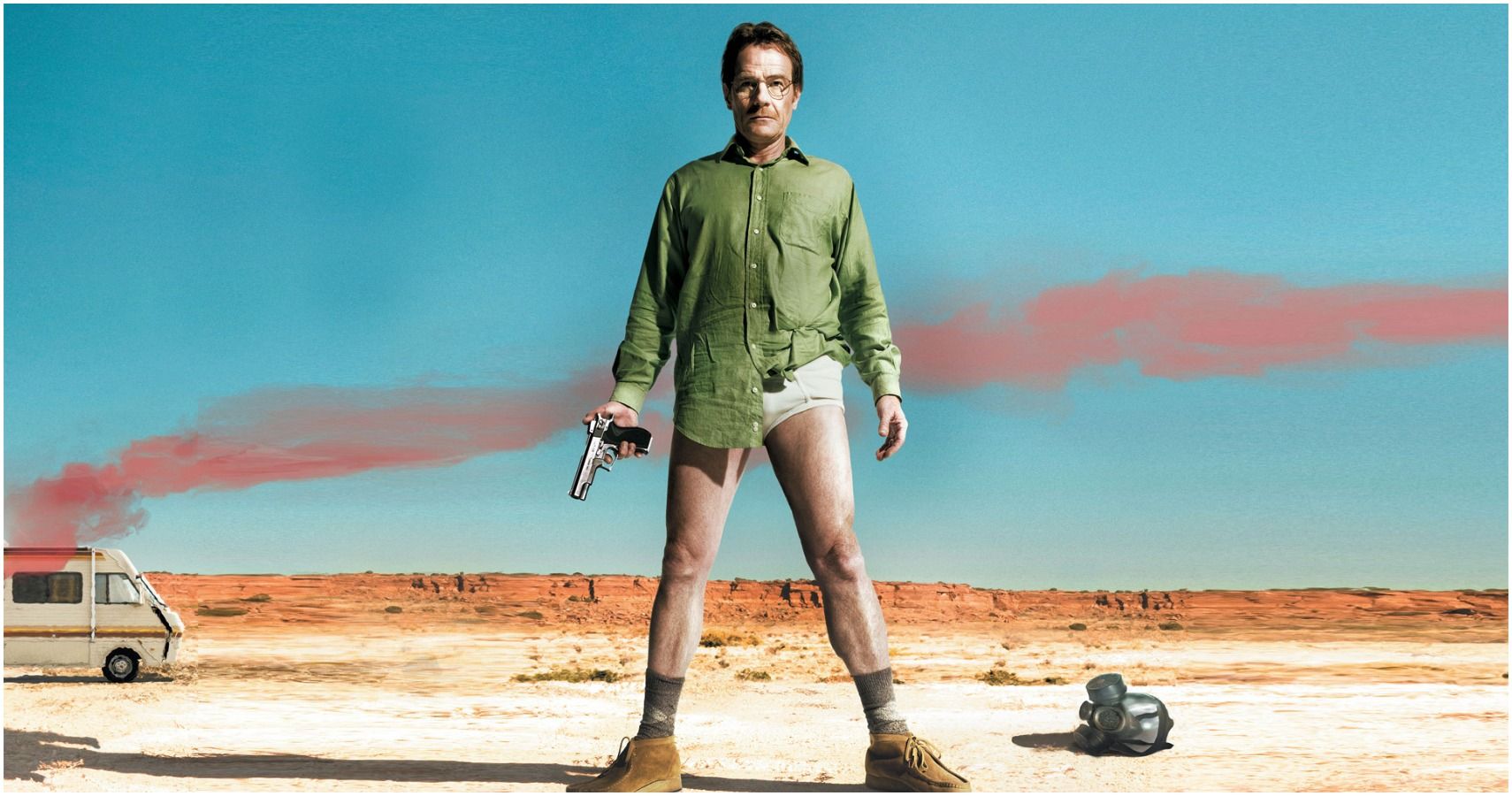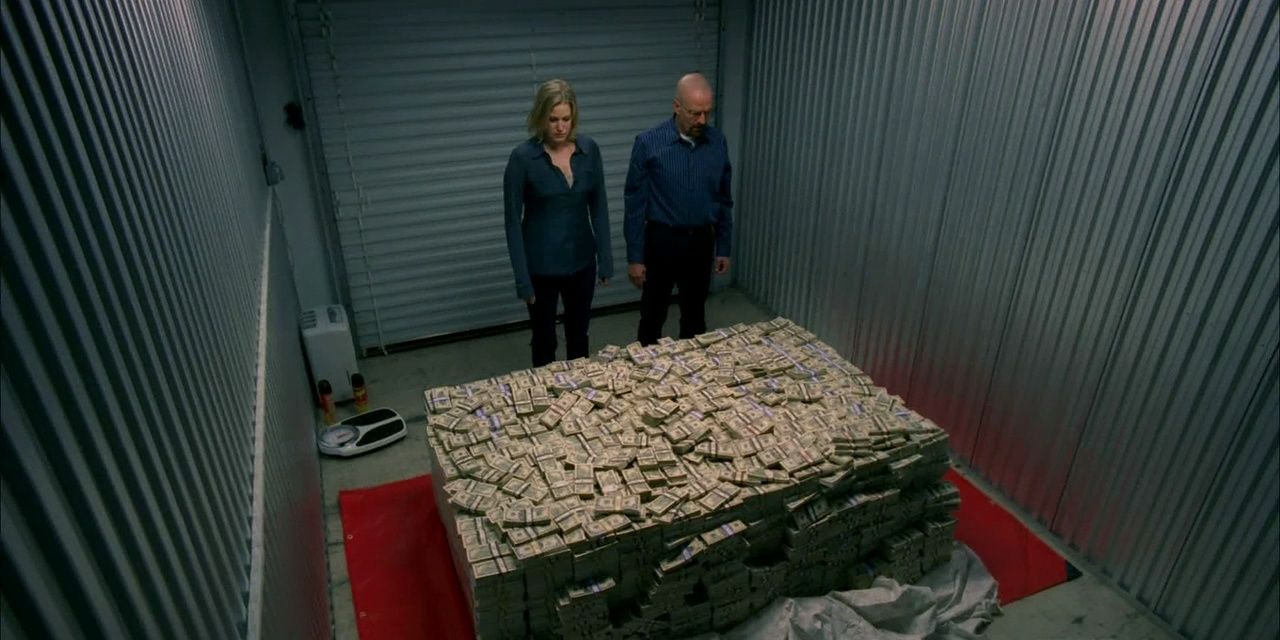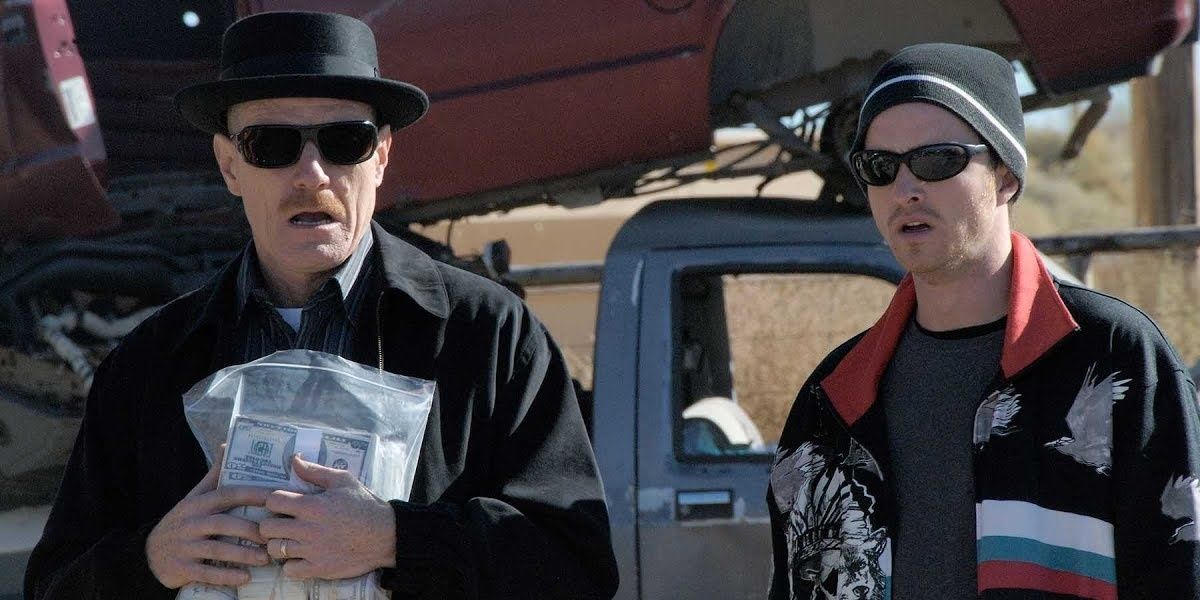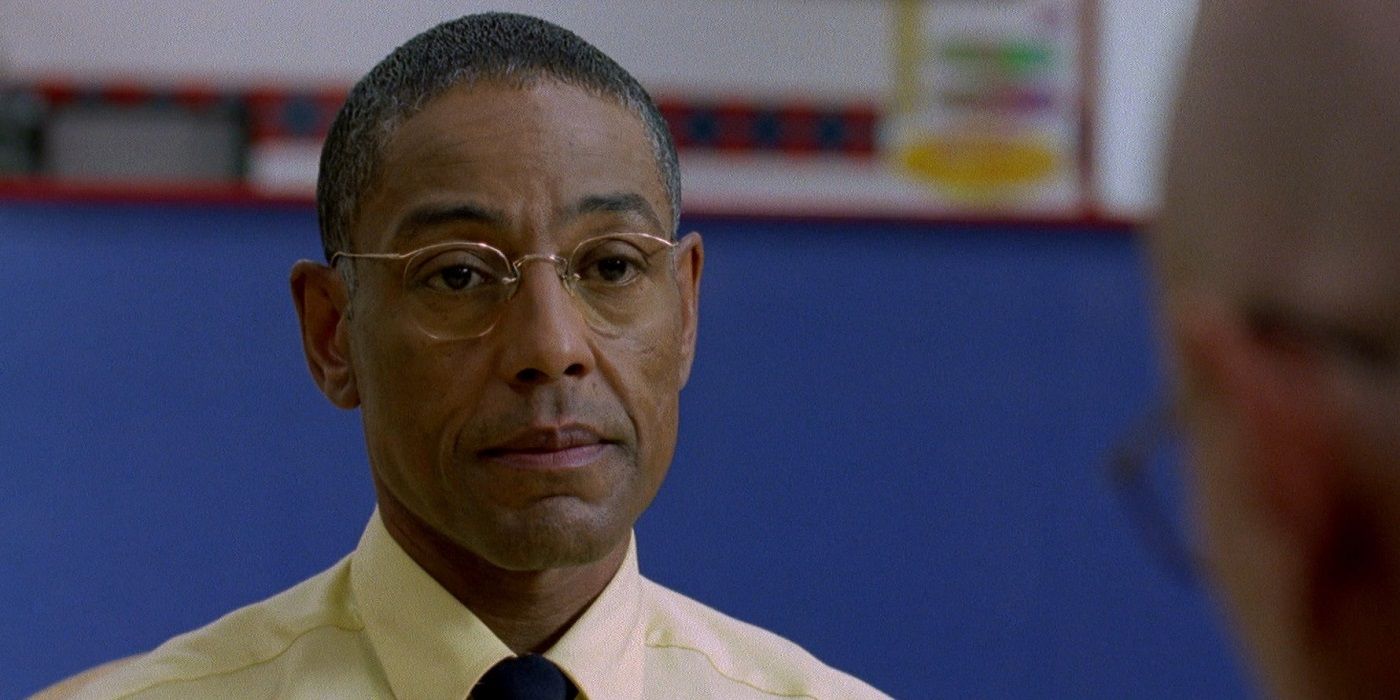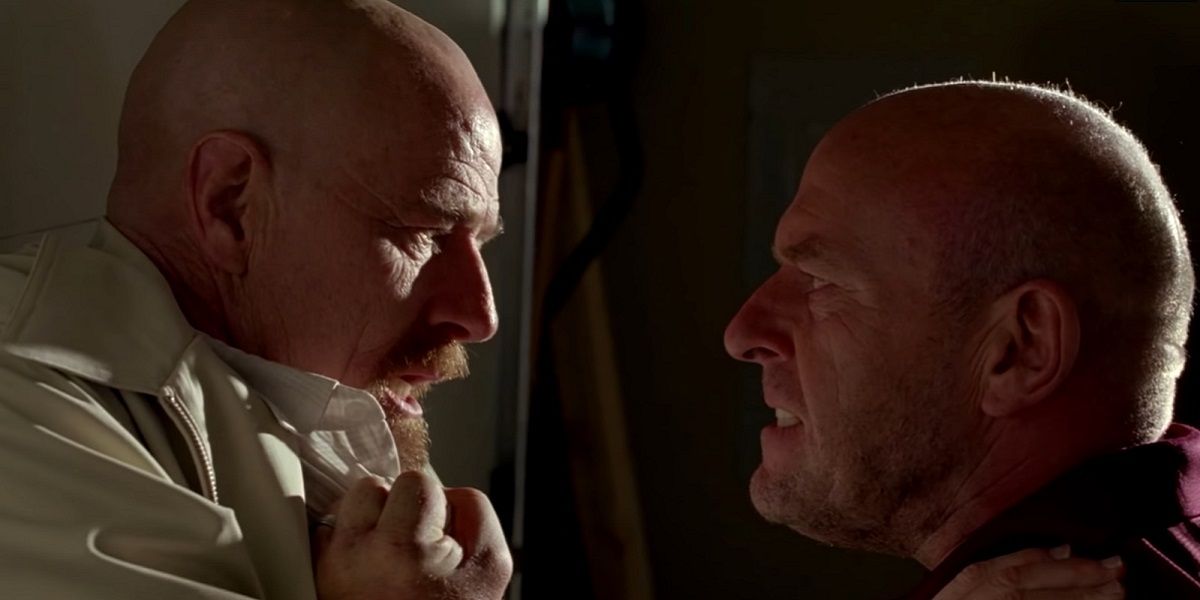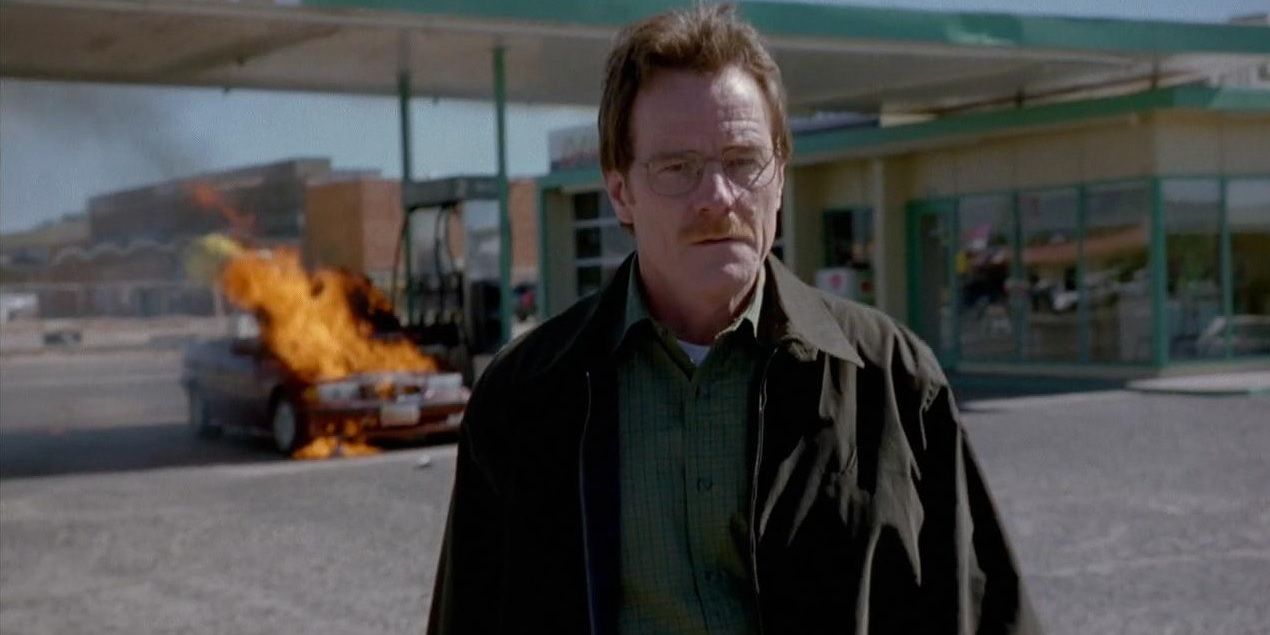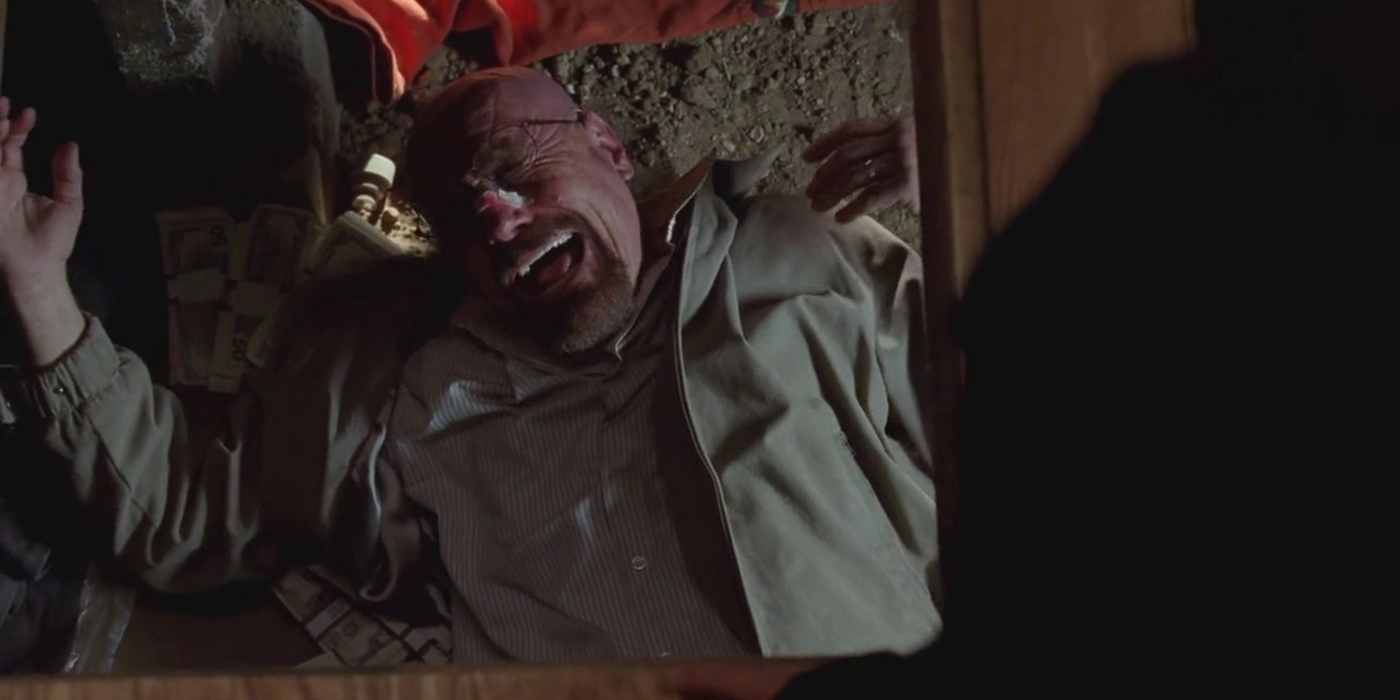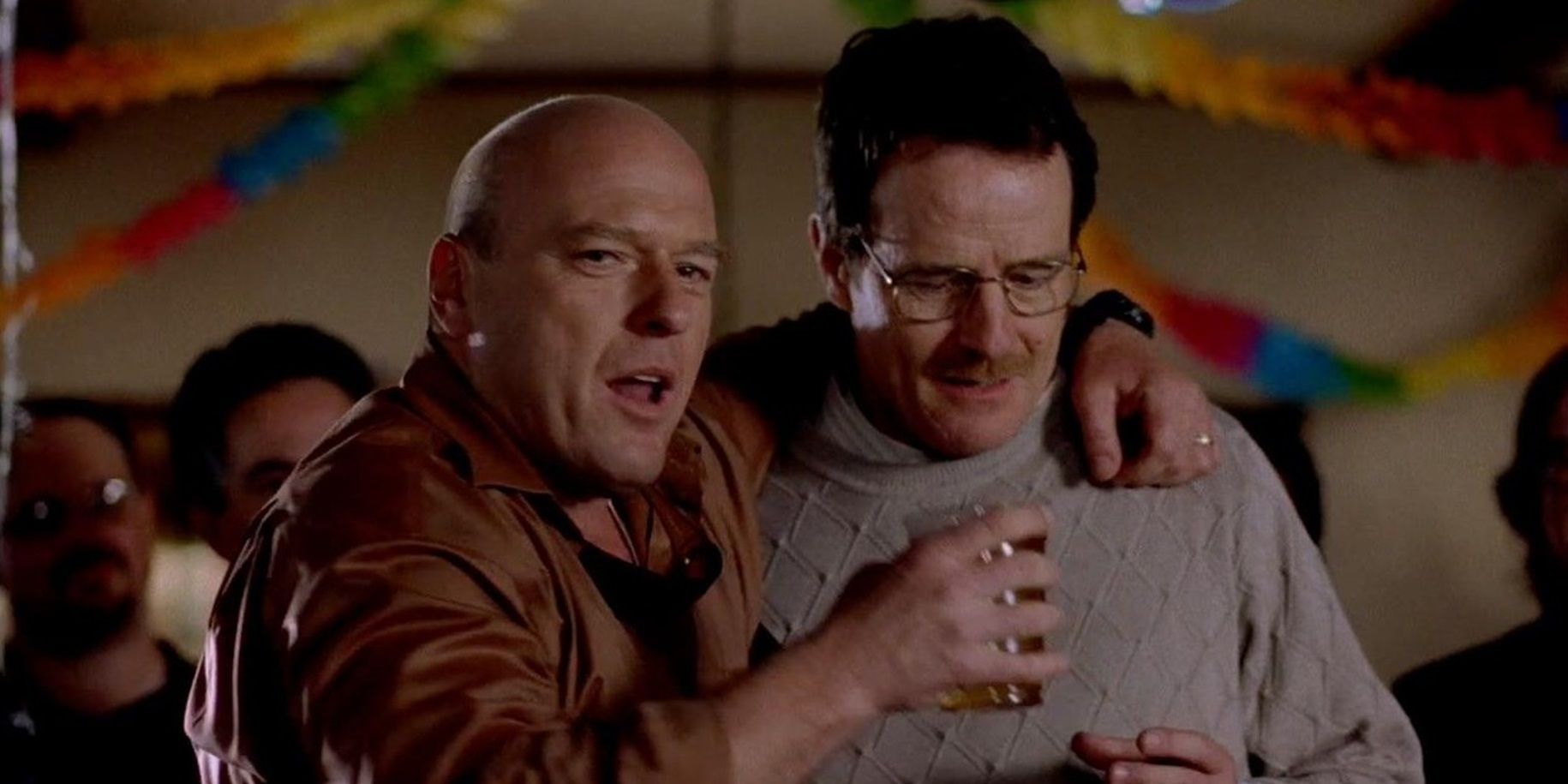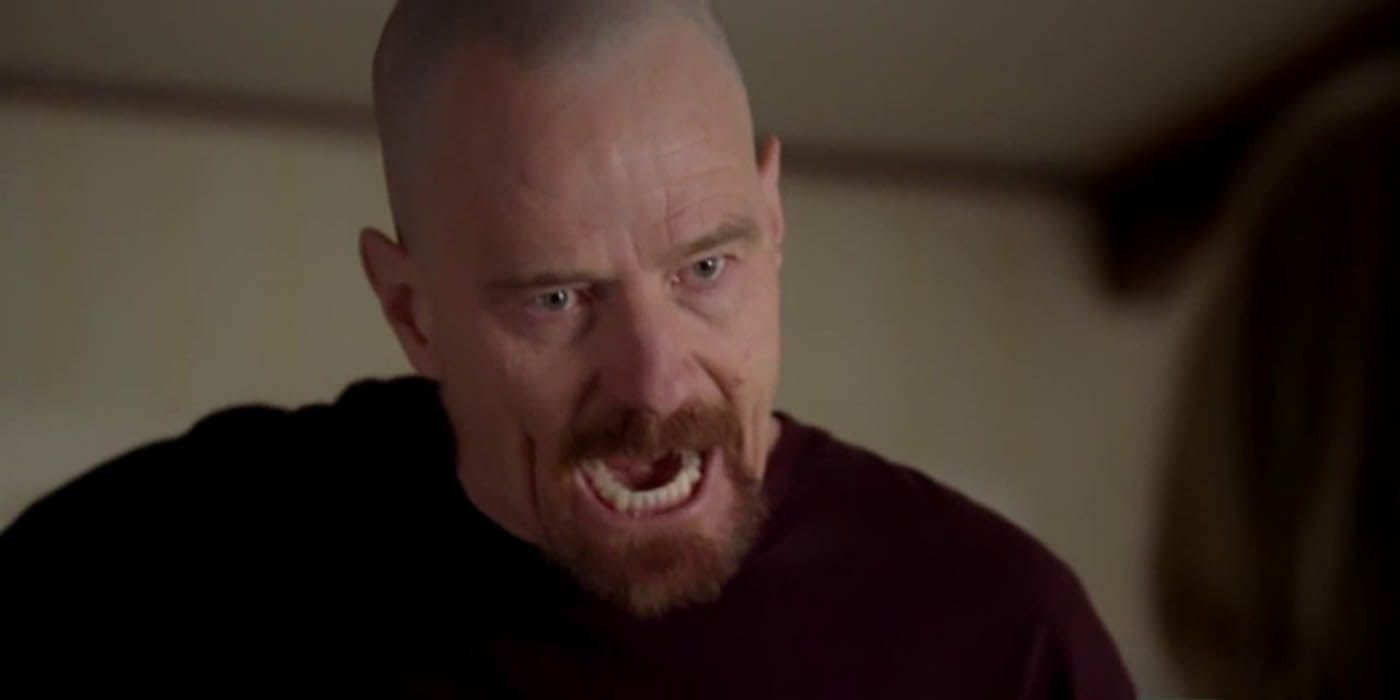The first season of Breaking Bad is generally ranked as the worst in the series’ five-season run. But the problem isn’t that season 1 wasn’t great television; it’s just that the show continually topped itself every year until its immensely satisfying final season wrapped up the saga of Walter White in the perfect way.
So, simply by comparison to the seasons that came afterwards, season 1 is arguably the worst. But there’s still plenty to enjoy in the show’s first season. So, here are five reasons why Breaking Bad’s first season is great, and five ways the show improved after it.
Season 1 Is Great: The Pilot Episode Is Perfect
The pilot episode of Breaking Bad is simply perfect. There are two types of TV pilots: the ones that set up the premise of the show, like Lost, and the ones that present an average day in the characters’ lives, like Seinfeld.
Breaking Bad’s pilot was the former, establishing who Walter White is and what drives him to enter the methamphetamine business. Vince Gilligan’s script packs in all the information viewers need without ever feeling like overkill.
The Show Improved: Higher Stakes
When he first sets out to manufacture meth, Walt thinks small. He just wants to make enough money for his family to have financial security when he’s gone. This means he has very little to hide from his loved ones and he can shrug it off with a made-up marijuana habit.
However, as the series goes on, Walt becomes more ambitious. Eventually, he considers himself to be in the “empire business.” As the stakes get higher, he has so much more to lose, and the series becomes even more gripping.
Season 1 Is Great: Bryan Cranston And Aaron Paul’s Chemistry
Walt’s relationships with everyone around him — Skyler, Hank, Walt, Jr., etc. — were completely engrossing, but the heart of the show was always his surrogate father-son relationship with Jesse.
What made this dynamic work from the beginning was Bryan Cranston’s impeccable on-screen chemistry (pardon the pun) with Aaron Paul. Their performances brought the characters’ back-and-forth to life spectacularly.
The Show Improved: Better Villains
In the first season of Breaking Bad, the main villain is Tuco Salamanca. Tuco is suitably intimidating, as he beats Jesse to a pulp and terrifies Walt whenever they’re in a room together.
But as the series went on, Walt faced more interesting adversaries. Most notably, he was confronted by Gustavo Fring, who was arguably even smarter than Walt — and definitely more ruthless.
Season 1 Is Great: It Masterfully Set Up The Show’s Conflicts
The foundation of all story is conflict, and Breaking Bad is has it in spades. The first season of the show set up all the conflicts beautifully. The most obvious one is Walt’s cancer diagnosis paired with his dire financial situation forcing him into the drug trade.
But there’s also his tumultuous relationship with Jesse, the fact that his brother-in-law is a DEA agent, the problems in his relationship with Skyler, the elaborate lies he tells to cover for his meth business, territory disputes with fellow drug pushers — the list goes on.
The Show Improved: It Masterfully Paid Off Those Conflicts
The only thing more exciting than seeing the setup of an intriguing story conflict is seeing its payoff. In the case of Breaking Bad, viewers got to see a ton of payoffs, from Hank finding out that his own brother-in-law is Heisenberg to Skyler attacking Walt with a kitchen knife.
Most of the biggest payoffs came in Breaking Bad’s final three episodes. Season 5’s “Ozymandias” is the climax of the series, bringing everything to a head; “Granite State” follows the fallout of all those conflicts bubbling to the surface; and “Felina” ties up the loose ends in a wildly satisfying way.
Season 1 Is Great: Huge Moments
One of the reasons why Breaking Bad has been compared to a very long movie that’s been split into 62 parts is that it uses the ultimate cinematic technique: carefully building to huge moments.
Season 1 established this straight away, with moments like Walt blowing up Ken’s car at a gas station and Walt blowing up Tuco’s office. (In season 1, the big moments mostly involved Walt blowing up his enemies’ stuff.)
The Show Improved: Even Bigger Moments
Between the second and fifth seasons of Breaking Bad, the writers slowly built to even bigger moments than they gave fans in season 1. All the extended breakfast scenes and drives through the Albuquerque suburbs seemed worth it for the disturbing satisfaction of seeing Walt lose his mind in the crawlspace.
From the murder of Gale Boetticher to the methylamine train heist, each season of Breaking Bad had bigger and bolder and more explosive moments that made the big moments in season 1 (which seemed massive at the time) suddenly feel small-scale.
Season 1 Is Great: It Gave Us Pre-Corruption Walter White
While the evil Walter White was undeniably the most fun to watch, telling fellow meth kingpins to say his name and plowing down drug dealers in his Pontiac Aztek, the audience had to get to know mild-mannered, pre-corruption Walt for those moments to work.
In season 1, viewers see that Walt gets no respect from anybody, even his family. Life has beaten him down. And as soon as he’s diagnosed with cancer, he sets off on a dark path.
The Show Improved: Walt Slowly Turned Evil
At the end of season 1, Walt is still a relatively good guy. When he watches Tuco mercilessly beat one of his goons in the season finale, he’s horrified. He even seems to be second-guessing his role in the drug trade.
By the end of the series, Walt is the Tuco. He doesn’t fly off the handle and beat people up, but he’s just as callous and psychotic. Vince Gilligan famously set out to "turn Mr. Chips into Scarface," and each season, Mr. Chips got a little closer to Scarface.

